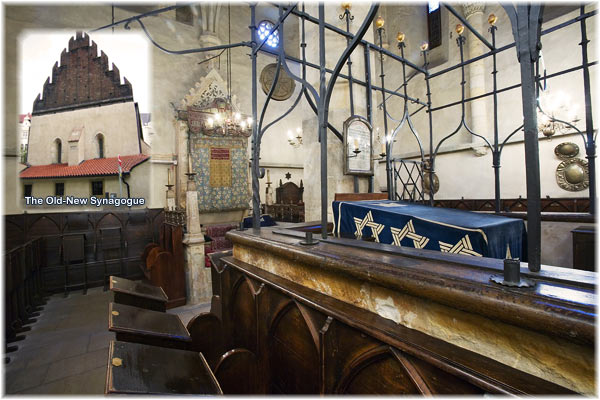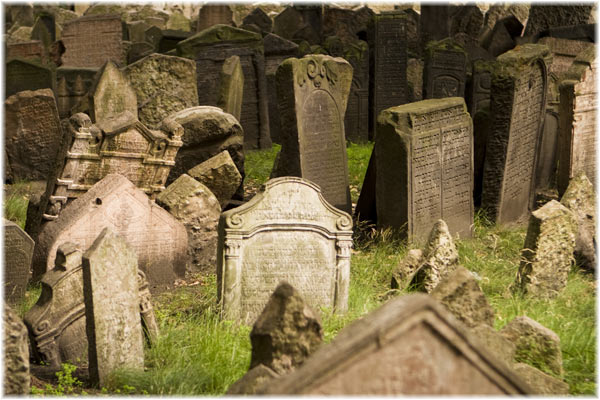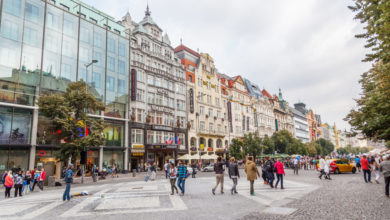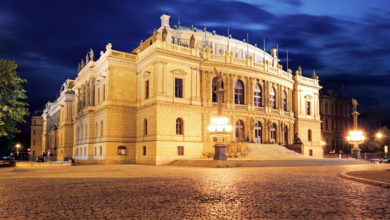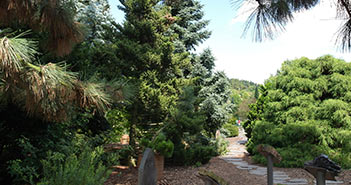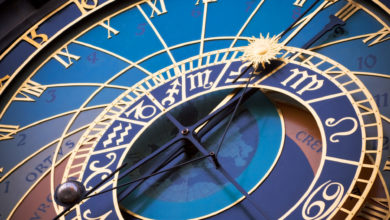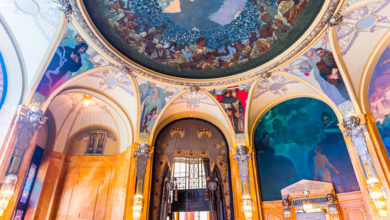Prague’s Synagogues
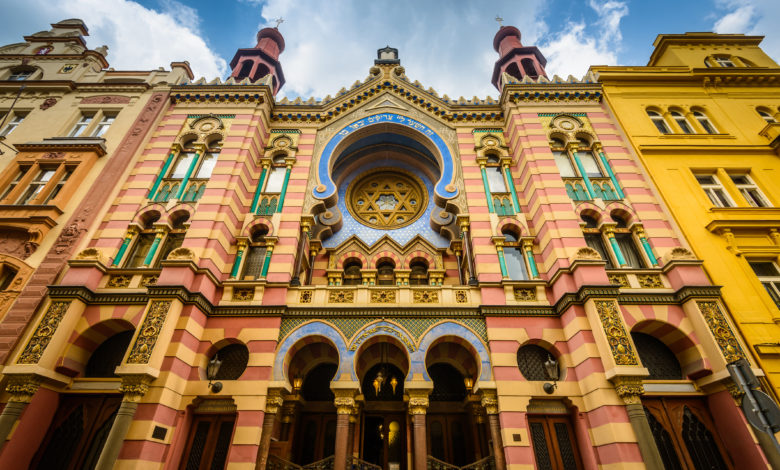
The Old-New Synagogue
Known as the oldest synagogue in Europe, this building dated back to the late 13th century and was at one point the Jewish community’s main place of worship. In addition to being an important site, it is also one of the most beautiful buildings in Prague. The building has a doubled-naved hall divided by pillars above which rests a unique five ribbed vaulting. The pulpit stands in the centre of the synagogue behind an iron grille from the 15th century. Pews also surround it for high members of the Jewish community. One of the seats is graced by the Star of David, where the legendary Rabbi Low sit. The five books of Moses, known as the Torah, rests in the bimah, which faces east. The building was not always as it is today. In the 14th century, an entrance hall was added, housing treasuries for tax collectors. One passes underneath a relief made up of leaves and grapes from the entrance hall into the main hall. The twelve branches symbolize the twelve tribes of Israel sprouting from one bush. The synagogue is also home to numerous legends and is the only synagogue in Prague where there are still services taking place.
The High Synagogue
Located directly across from the Old-New Synagogue, it was build at the same time as the Jewish Town Hall in the late 16th century. At one point, the two buildings were joined thanks to an entrance on the first floor, but it has been bricked up since the end of the 19th century. It also used to be a place for those in the Jewish community to meet, but it now uses as an exhibition hall housing textiles from the Jewish Museum.
The Klaus Synagogue
This synagogue is a public building that gets its name from three smaller buildings called klauses from which it is made. One of these buildings housed the famous Talmudic School, the second was a synagogue, and the third was a hospital. The building’s interior comprises gorgeous stucco work and contains cylindrical vaulting with four pairs of lunettes. Today, the synagogue houses the exhibition of Hebrew prints and manuscripts tracing the history of the Jews in Europe all the way back to the Middle Ages. Many legends surround the building, including one that says angels carried the stones that make up the building and have protected it ever since, including its survival through two fires.
The Pinkas Synagogue
Named for the rabbi who established it, this synagogue dates back to the 15th century. Today, it is dedicated to Bohemian and Moravia Jewish victims of the Holocaust. The interior contains the names of 77,297 who lost their lives at the hands of the Nazis. Over its lifetime, the building has been rebuilt several times thanks to numerous floods.
The Maisel Synagogue
Mordechai Maisel built this synagogue as a private place of worship. Maisel was the head of the Jewish community at the time and, as a result, was granted special permission to build the synagogue by the emperor. Because Maisel was one of the richest people, he built the synagogue and paved the streets of Jewish Town and enlarged a hospital. It was the largest synagogue in Prague but got its current look from a facelift in the 19th century. While the region was under Nazi occupation, the synagogue stored stolen Jewish property, and today it houses numerous objects from the Jewish museum.
The Old Jewish Cemetery
Located next to the Klaus Synagogue, it is important, but it is unknown exactly when the cemetery was established. The cemetery is now closed, but the oldest headstones date back to 1439 and are also the final resting place of Avigdor Kara, who lived in 1389. From then, it was in use until 1787. Because the Jewish community only had one cemetery for use, it quickly ran out of room, and the Jews had to begin burying people on top of one another in layers. It is now estimated that there are 80,000 graves in twelve layers under twelve thousand headstones. Many of those gravestones show the deceased person’s name and share some facts about them as well. Many of them have emblems symbolizing different clans, occupations and names. Unlike other Jewish cemeteries, this one does hold reliefs depicting human forms. These are not often found because of the holy law, which says that people’s depiction is an arrogant attempt to imitate God’s work. As a result, a few imperfections have allowed the artists to get around the law.

